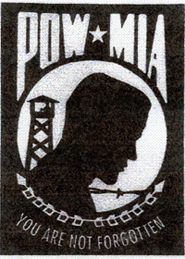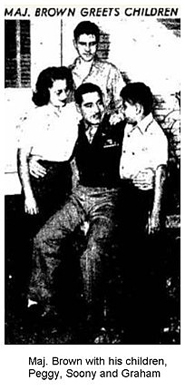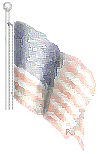CAPT. BROWN IS IN FAIR HEALTH
Capt. Albert N. Brown, Council Bluffs dentist, now a prisoner of the Japanese in the Philippine Islands, is “under treatment,” but is “health is fair” and he is “improving.”
This information was contained Saturday in a prisoner’s post card received here by his wife, Mrs. Helen Brown, 424 Huntington avenue. It is the third card she has received from her husband, and the first since September this year.
“Please give my best regards to the Browns, Grahams, Clinic, Aeous, Nonpareil and friends,” the card said.
The card carried no date, and came from prison camp No. 1 in the Philippines.
Source: The Council Bluffs Nonpareil, Council Bluffs, Iowa, Saturday, December 11, 1943, Page 3
![]()
COMMUNICATION FOR JAPANESE PRISONER
A card from Capt. Al Brown, prisoner in the P. I.s says he is improving and is in fair health and sends greeting to friends.
Source: The Council Bluffs Nonpareil, Council Bluffs, Iowa, Sunday, December 19, 1943, Page 19
![]()
CAPT. BROWN FREE REPORTS INDICATE
Has Been Prisoner Since Corregidor
 Capt. Albert N. Brown, dentist, 424 Huntington avenue, a prisoner of the Japanese government since the fall of the Philippines, has arrived in Ominato, Japan, heading a delegation of five prisoners of war from a Hokkaide island prisoner of war camp, according to an Associated Press dispatch received here Tuesday.
Capt. Albert N. Brown, dentist, 424 Huntington avenue, a prisoner of the Japanese government since the fall of the Philippines, has arrived in Ominato, Japan, heading a delegation of five prisoners of war from a Hokkaide island prisoner of war camp, according to an Associated Press dispatch received here Tuesday.
Capt. Brown was in command of a group of five men sent from the camp to report to Vice Adm. Frank J. Fletcher of the U. S. 9th Fleet off Ominato, now in the hands of the U. S. navy.
Capt. Brown brought first word to the world that Lt. Col. James P. Devereaux, heroic marine commander on Wake Island, is alive and in charge of a prisoner of war camp on the northern island. Captain Brown said the marine hero was in good health but had lost much weight.
“I heard recently that he was very thin,” said Brown, who was on Bataan and made the death march before being transferred to northern Japan. He said the Japanese had mistreated the prisoners, forcing them to work in coal mines, in small spaces that frequently caved in. One prisoner received a broken back in one cave-in.
Brown said he estimated about a month before the end of the war that some of the weaker prisoners would die of malnutrition within six months if the Japanese did not increase the diet.
The five prisoners were met at the Ominato railroad station by two American correspondents and a photographer who had been tipped by the Japanese police that they were on their way here from Hokkaido.
Family Is Thrilled.
“It’s been a long time – we are thrilled to death,” said Mrs. Brown at her home here Tuesday. “The children are already talking about what they are going to do when Dad gets home.”
No official notice of Capt. Brown’s release has as yet been received at his home.
The camp in Hokkaido was located by Lt. Com. Robert R. Startzell of Houston, Tex., a fighter pilot, and Lt. (jr.) Walter Webb of Baldwinville, N. Y., a torpedo bomber pilot, who dropped to the men a parachute load of cigarets (sic), medicine, food and a portable raodi set on which the following message from Adm. Martin was read to the prisoners:
“We will drop supplies to you all day. Mark an area with a cross and keep clear of it when planes are overhead, since packages will not have parachutes. If possible try to get representatives to Ominato, which is now occupied by the U. S. navy.”
Startzell and Webb returned to their base and shortly afterwards great flights of bombers soared over the camp in Hokkaido and dropped necessities and luxuries to the inmates.
It was believed to be the greatest plane mission of its type that was ever accomplished and it made officers and men of the tight little aircraft carrier escort almost as happy as it must have made the allied prisoners, The Associated Press reported.
Navy Lt. Leonard L. Rautenberg of Brockton, Mass., an air pilot officer of the carrier Hoggartt Bay, who made a food dropping trip over the camp in a bomber piloted by Lt. Francis Tonrey of Dillon, Mont., said he had been informed [Page 2] by radio from the camp that the prisoners included 51 Americans, 283 British, 51 Dutch and eight Australians.
Need Medical Aid.
Webb said the prisoners radioed him that 42 of their number required medical attention, but that none in serious condition. They said there were 11 officers in the group.
The fliers reported that Jap civilians stood quietly along the east side of the prisoner camp courtyard, hoping a stray package or two might fall their way.
“But I saw no package fall into the Japanese area,” Rautenberg declared.
“There were three long barracks buildings and several smaller structures. The entire camp was enclosed by a 10-foot board fence. Nearby was a large coal mine. It’s possible prisoners were made to work in the mines.”
Adm. Fletcher sent word to the camp the prisoners would be released as soon as evacuation teams became available in north Japan. He asked that a delegation from the camp be sent to Omainato. Capt. Brown apparently headed this group.
No mention was made of Capt. Brown’s condition, but his health is presumed to be good since he was selected to head the mission to Ominato.
With Capt. Brown at Ominato were Pharmacist’s Mate William T. Sterling of Herrington, Kan., Seaman 1/c James B. Burger of Farmville, Va., Pvt. Jules L. Boasley of Burton, Wash., and Australian Army Gunner A. C. Grouder of Ascot, Brisbane.
Capt. Brown, a reserve officer, entered the army prior to Pearl Harbor [1937] and was in the Philippines when war was declared. He was listed as “missing” May 20, 1942 and officially listed as a prisoner on Feb. 24, 1943. His family has received several cards from him since his capture.
Source: The Council Bluffs Nonpareil, Council Bluffs, Iowa, Tuesday, September 11, 1945, Pages 1 & 2
![]()
Japs Promised Death to American Prisoners
If Islands Invaded, Major Brown Declares
Major Al Brown survived life in eight Japanese prison camps and 16 months of imprisonment, but doubts very much if he’d be home today had the Americans been forced to invade the Japanese home islands. For the American prisoners had been told by Nip leaders that in case of invasion “All the Japanese will die, and you prisoners will die with us.”
The genial Council Bluffs dentist, looking more the worse outwardly from his years of Jap treatment, was reunited with his three children at midnight Sunday, arriving with his wife, Helen, from California where he has been hospitalized since his arrival in the United States on Sept. 21. The house at 424 Huntington avenue was a happy one Monday with “Dad” home.
Clubbed Over the Head.
Al Brown’s career as a Japanese prisoner covers everything in the book. He made the Death March, was stabbed by a Jap guard and clubbed over the head with a rifle butt when he fell out of line through the gaumlet (sic) of the Philippine camps and then spent a year and a half on the Jap mainland in four different spots.
Maj. Brown is a dental officer. He was assigned, however, to the first battalion of the 24th field artillery as a battalion surgeon just prior to the outbreak of the war. He was at Clark field, near Stattsenburg, when the blow came on Dec. 8, 1941.
Bach First Casualty.
Maj. Brown was with the 24th FA of Gen. Wainwright’s Philippine division when the Japs came over Clark field on Dec. 8, and recalled Monday that Capt. Paul Bach of Council Bluffs was one of the first American war casualties of the island, being struck by bomb fragments. Capt. Bach later died of dysentery in a Jap prison camp.
Al Brown became an extremely versatile medical man as the war developed. He was a dental officer, a surgeon and a first-aid man – he had to be, his battalion had no other medical officer. The Japanese finally trapped the Bataan forces and forced their surrender on April 9, 1942 – then followed the “Death March.” The Japs forced their prisoners to go six days at full speed on two rice bowls.
“I’ve got a rice brain,” Brown noted Monday. Discovery of loaded pistols on four American colonels and a major enraged the Nips so that they pushed the footsore, weary, and starved Americans 56 kilometers to Maruvales without a stop.
Camp O’Donnell, located near Staatensburg, was the first of the infamous Jap prison camps to which the Bataan conquerors led their captives. Worn and hungry, many of them wounded, the men died like flies during the six weeks Maj. Brown spent at O’Donnell. Filipino – of which there were 42,000 in the camp—died at the rate of 500 a day. Americans – of which there were 7,000 – died at the rate of 50 per day. There [Page 6] were 1,600 American deaths at O’Donnell while Maj. Brown was imprisoned there.
Moves To Japan.
He was moved on June 1, 1942, to Cabanatuan, being shifted twice to Bilibid prison in manila on a special medical detail until he left [with?] 3,500 men at Cabanatuan.
The former Abraham Lincoln and Creighton university athlete figures he was making a “smart move” when he volunteered with 200 other doctors and medical corps men to leave the Philippines for Japan in the spring of 1944. Maj. Brown reasoned: “The Japs would move all those thousands of prisoners from the Philippines when the ‘heat was on’ – that is, when the Americans came in. Chances for survival on prison ships would be pretty slim” – so he made the choice – Japan.
Months afterward, in the summer of 1945, Brown got a letter from his wife telling him that Dr. James Musselman of Omaha – who worked with him on the Philippines at Staatsenburg an then at Cabanantuan, and who had elected to “stick” – had arrived home in Omaha.
“I was really blue that day,” Al recounts.
The trip to Japan was rather uneventful, “sweating out” the submarines was the only worry. The Americans were unloaded at Moji on Hyushu on March 23, 1944, then moved by train to Aomori on Honshu and across to the island of Hokkaido, where Hakodate, a principal coast town became their “home.”
Move Just In Time.
“We spent most of our time – including a winter at Hakodate and Muroran, and then north through Sapporo to Bibal.” There Maj. Brown was in charge of the American detail of 60 prisoners in a camp of 393 men, mostly British. The northward movement was made “just in time” to escape the air and sea blows which were struck by the Americans along the coast, engulfing Hakodate and Muroran.
“When the battleships Iowa and Missouri shelled the coast, we could hear those big 16-inchers booming away – the sound traveled clear up the valley to Bibal,” Maj. Brown recalled.
“The food situation went in cycles. We were starved for the first ten months after Bataan.” Everyone, including Brown, suffered from malaria, dysentery and other diseases, and it was during this period – prior to the arrival of any Red Cross food parcels – that the death rate was so appalling.
The first six months of 1943, food was plentiful – “all we could eat,” the Bluffs major said. “Then the Japs lightened up in the latter part of ’43 and gave us dried Indian corn and rice for six months. Food in Japan during 1944 was acceptable but in 1945 belts were tightened and the fish and rice grew slim, and rations were poor until the Japanese fell.”
Knew It Was Over.
On Aug. 15 last, the American prisoners at Bibal watched Jap soldiers and civilian workers in the camp listen to a radio broadcast by Emperor Hirohito – “And when the Japs came away weeping we knew it was all over,” Major Brown said.
Immediately the Japs trotted out their psychology, informing the Americans that “a typhus epidemic had hit the town” and the prisoners were informed they would not be sent out to do their daily stint in the coal mines. A few days afterward, the aged Japanese colonel who commanded the Bibal camp called in Major (then Capt.) Brown with the British officer in charge and told them, “The Americans and Japanese have decided to shake hands. The emperor has ended the war to prevent further loss of American and Japanese lives. You will soon be on your way home.”
Food Comes In.
“Then the food started coming in – dropped from B-29’s. Two Americans were killed by these parachuted food parcels, which were labeled “three-day ration.” That “three-day ration” was more food than we would normally get in two months,” Major Brown declared.
“The men gained a pound a day – they ate and ate and ate. We set up a dispensary with two lines, both aimed directly at relieving any stomach ailments which might occur.
“One British seaman bought five chickens and a dozen eggs – cooked and ate the eggs and four chickens, then consumed a full field ration of GI food. He came staggering to me with a plea to “Take this other chicken, Captain. I just can’t eat it.”
With the food came a two-way radio and a message from Admiral Martin of the U. S. navy to send out a detail to pave the way for release of the prisoners on Hokkaido. Capt. Brown led a five-man parade out of Bibal, traveled by train two days to reach Hakodate, then crossed by ferry to the island of Honshu, where they made another long train trip to reach Ominato, where the navy had established a base.
Greeted By Newsmen
“Our propaganda machine had spread word that marines had completely occupied northern Honshu – we rode for hours and hours looking for marines at each passing station but saw none. At Ominato we were greeted by five American newspaper men, who evidently had word we were coming.”
“Where are the marines?” Capt. Brown inquired, and “I was promptly hush-hushed with ‘that’s our propaganda at work, all he have is 60 ships in the bay – not one marine or one soldier is on this island.’”
Winters Cold.
Guided by Capt. Brown’s directions, giant C-54’s flew to Sapporo the next day and started the liberation of allied prisoners. “Had we been forced to spend another winter there, we would have all perished. The winters were terribly cold and in the weakened condition all [the] men were in, pneumonia would have wiped us out this year, “Major Brown opined Monday, adding, “I never did get warm in Japan.”
Treated royally at Ominato by the navy, the Bluffs major was soon flown to Tokyo, where he was treated aboard the hospital ship Benevolence, starting the long trip homeward via a navy plane to Guam. At Guam, the prisoners were halted and hospitalized for a few days and then flew homeward on army planes, making short stops at Kyajelem, Johnston islands and Hawaii before reaching San Francisco on Sept. 21 – “happy day” Major Brown puts it.
On Convalescent Leave.
He’s home now on convalescent leave, which is likely to stretch over the holidays, and then back to California hospitals for additional rest and treatment.
As for Japan, here is what Major Brown thinks: “Should we pull out of Japan today that nation would be helpless for at least 50 years. The islands are riddled, towns laid to waste by devastating B-29 raids. Industry is completely destroyed, the people have huddled in lean-tos.
“The combined air and sea war on the home islands, with what marines and army did elsewhere, was really a remarkable demonstration of power,” Major Brown declared Monday.
How many points does the major have for discharge? He doesn’t even know – hasn’t even bothered to count ‘em.
“I’ve got plenty, I guess,” he ventured.
Source: The Council Bluffs Nonpareil, Council Bluffs, Monday, October 22, 1945, Pages 1 & 6
![]()


